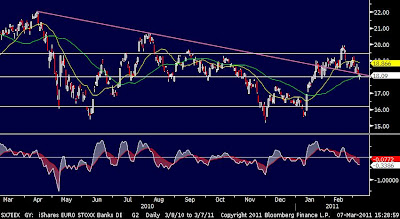
If you want to make something really bad, it can happen that suddenly the whole world agrees that this actual outcome is the best thing that ever could have happenened. Like in Mel Brook's "The Producers" where a financial consultant presents a failed Producer, Max Bialystock, an excellent idea: Making the worst Brodway Musical of all times: "Spring Time For Hitler". After some calculations, he realizes that "under the right circumstances, a producer could actually make more money with a flop than he can with a hit. ... You could've raised a million dollars, put on your $100,000 flop, and kept the rest!" Max proposes the ultimate scheme:
Step 1: We find the worst play ever written.
Step 2: We hire the worst director in town.
Step 3: We raise two million dollars. One for me, one for you. There's a lot of old ladies out there!
Step 4: We hire the worst actors in New York and open on Broadway and before you can say
Step 5: We close on Broadway, take our two million, and go to Rio.
A comparable Idea was probably QE, and the outcome is as surprising to most of us as on Broadway. Mr. Gross from Pimco wrote in his latest comment:
"No clue or outright signal could have been any clearer than the one given in December 2008, labelled “Quantitative Easing.” While the term was new, the intent was obvious: (1) pump public money into the financial system to replace private credit that was being destroyed in the process of deleveraging; (2) lower interest rates on intermediate and long-term mortgages/Treasury bonds and in the process flush money into risk assets – most visibly the stock market; and (3) forecast publically then hope that higher stock prices would lead to a wealth effect, and in turn generate new private sector lending, job creation and a virtuous circle of economic expansion that would heal the near-fatal wounds of Lehman and its aftermath. If that was the game plan, then so far, so good, I’d say. Interest rates are artificially low, stocks have nearly doubled since QE I’s first announcement in December of 2008, and the US economy will likely expand by 4% this year, although a $1.5 trillion budget deficit must share QE’s Oscar for most stimulative government policy of 2009/2010."
In my view, first of all, the wealth effect is not very important, since about 18 % of the U.S. population owns almost 90 % of the country's wealth. But as the US accumulates more and more debt, PIMCO is probably asking the right question:
"What an unbiased observer must admit is that most of the publically issued $9 trillion of Treasury notes and bonds are now in the hands of foreign sovereigns and the Fed (60%) while private market investors such as bond funds, insurance companies and banks are in the (40%) minority. More striking, however, is the evidence in Chart 2 which points out that nearly 70% of the annualised issuance since the beginning of QE II has been purchased by the Fed, with the balance absorbed by those old standbys – the Chinese, Japanese and other reserve surplus sovereigns. Basically, the recent game plan is as simple as the Ohio State Buckeyes’ “three yards and a cloud of dust” in the 1960s. When applied to the Treasury market it translates to this: The Treasury issues bonds and the Fed buys them. What could be simpler, and who’s to worry? This Sammy Scheme as I’ve described it in recent Outlooks is as foolproof as Ponzi and Madoff until… until… well, until it isn’t. Because like at the end of a typical chain letter, the legitimate corollary question is – Who will buy Treasuries when the Fed doesn’t?"
With the recent rise in commodity prices, as well as the hawkish comments made by the ECB, the USD came under heavy selling pressure this week, and as a result of this, the discussion on reserve currency status is reemerging. If the FED & the Treasury do not take steps to protect the USD against it's devaluation, it will be extremly difficult for the US to sell Treasuries at the current market rates.
As for the overal market action over the past 2 weeks, most Indices display volatile sideways action. Despite the rise in Oil prices, equity markets remain resilient, and we still don't have one single sell signal in place, neither in Europe, nor in the United States Of America. For now, the worst idea, creating more debt to heal a debt problem is working for the markets. Probably a phenomenom like in Mel Brooks Brodway act. The producers of QE are certainly surprised how well it worked on the short run, but the side-effects are just starting to show up now, and they are not very welcome.
Vix: out of the downtrend, but resistance at 23 remains intact.
XEG: Huge run for Canadian Oil producers 23 is resistance
European Banks: a break of 18 would not bode well for the bulls

SPY: Not a top yet. Support for the SPX is 1307.9

QQQQ: Rise in Oil should reduce IT-spending, but not a top yet

Dow Jones Industrial: The message is clear: Has to hold 12000 & 11850

Eurostoxx50: Only a fall below 2900 would give a sell signal












